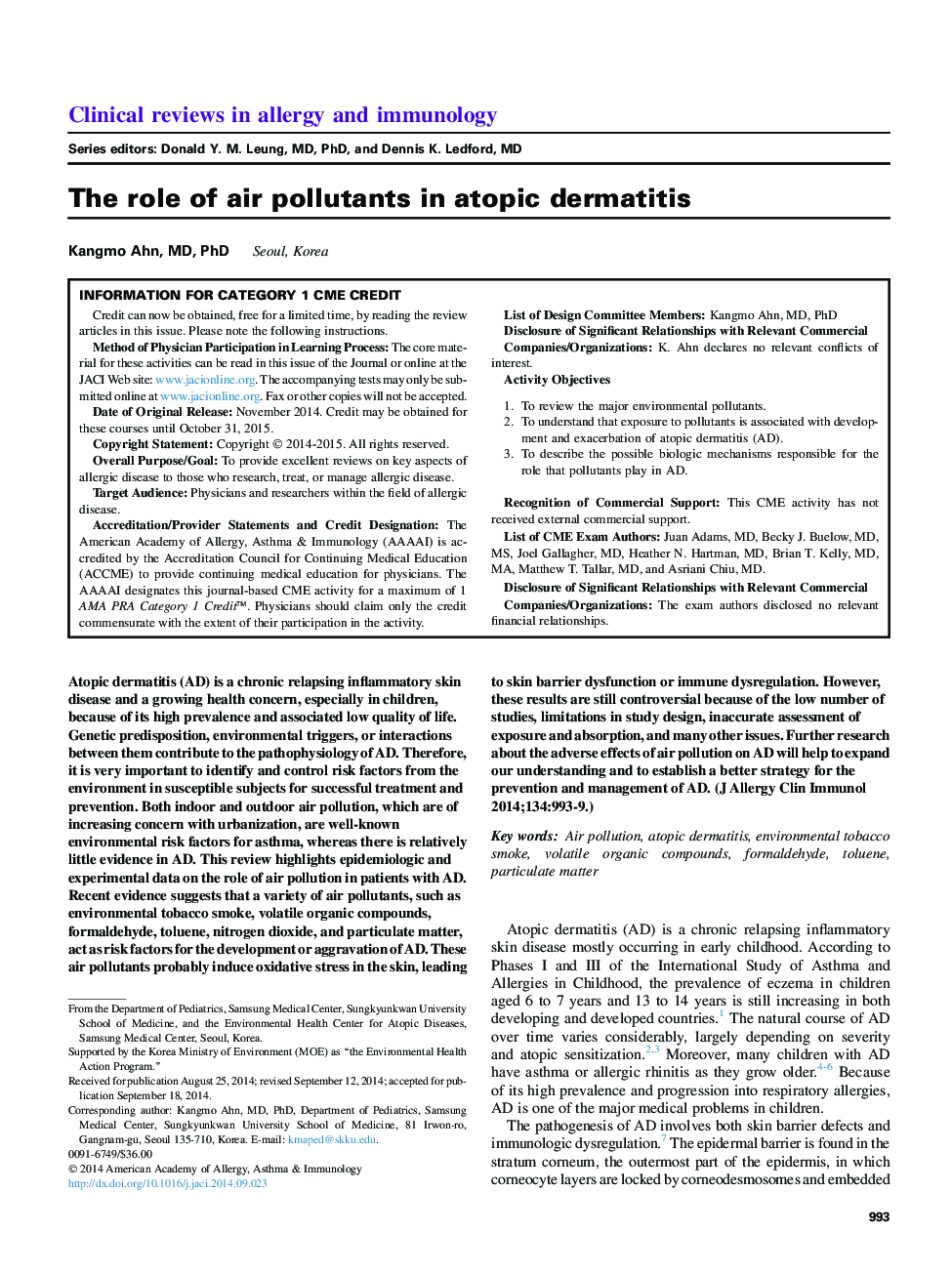| Article ID | Journal | Published Year | Pages | File Type |
|---|---|---|---|---|
| 6063046 | Journal of Allergy and Clinical Immunology | 2014 | 7 Pages |
Atopic dermatitis (AD) is a chronic relapsing inflammatory skin disease and a growing health concern, especially in children, because of its high prevalence and associated low quality of life. Genetic predisposition, environmental triggers, or interactions between them contribute to the pathophysiology of AD. Therefore, it is very important to identify and control risk factors from the environment in susceptible subjects for successful treatment and prevention. Both indoor and outdoor air pollution, which are of increasing concern with urbanization, are well-known environmental risk factors for asthma, whereas there is relatively little evidence in AD. This review highlights epidemiologic and experimental data on the role of air pollution in patients with AD. Recent evidence suggests that a variety of air pollutants, such as environmental tobacco smoke, volatile organic compounds, formaldehyde, toluene, nitrogen dioxide, and particulate matter, act as risk factors for the development or aggravation of AD. These air pollutants probably induce oxidative stress in the skin, leading to skin barrier dysfunction or immune dysregulation. However, these results are still controversial because of the low number of studies, limitations in study design, inaccurate assessment of exposure and absorption, and many other issues. Further research about the adverse effects of air pollution on AD will help to expand our understanding and to establish a better strategy for the prevention and management of AD.
